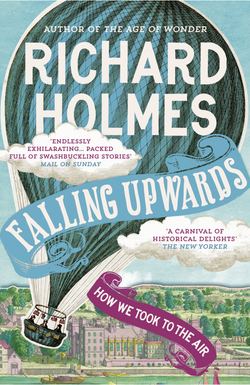Читать книгу Falling Upwards: How We Took to the Air - Richard Holmes - Страница 30
5 Wild West Wind 1
ОглавлениеFor American balloons the horizon was just opening up. From the 1840s, long before the establishment of the Union Pacific railroad in 1869, a generation of small-time fairground aeronauts and showmen had begun to dream of achieving the ultimate airborne feat and publicity coup. It was of course the big one, the epic: a single non-stop balloon flight three thousand miles right across America.
American balloonists, unlike their British counterparts, had a vision of their nation’s untamed nature, the wilderness and vastness – the endless great prairies, forests and lakes. Their long and daring attempts at trans-America flights were always made from west to east because of the prevailing winds. They were also haunted by the idea of crossing the ultimate wilderness, the three and a half thousand miles of the Atlantic Ocean.
This was at a time when most long-distance transport in America was still by horse, wagon or stagecoach, or else by boat slowly along one of the great rivers like the Ohio or the Mississippi. Railroad-building had only begun in 1830, with the Baltimore and Ohio Line, and by 1840 there was still only about 2,500 miles of track in the whole country, almost all of it confined to local lines on the eastern seaboard, between Charleston and Boston. The great cities of the mid-west, like Chicago and Cincinnati, were served primarily by paddle steamers or Wells Fargo stagecoaches until the 1850s, and serious railroad-building westwards did not begin until after the passing of the Railroad Act of 1862.
When Charles Dickens went to America in 1842, although he was rapturously received, hospitably cared for and most generously financed, his five-month ‘national tour’ remained largely along the east coast, visiting Boston, New York, and Washington. He got as far north as the Niagara Falls, no further west than Kentucky, and no further south than Missouri and a thoroughly unpleasant ride in a steam paddleboat down the Mississippi. Subsequently he complained about most of it in his American Notes (1842).
No one was sure where a trans-American balloon flight should start from, or in which direction it should go. But it had huge symbolic power as an idea. There was no real equivalent challenge in Europe. Such a flight would celebrate the land as one vast, rolling entity. It would in a sense both discover America, and knit it together. It would also be a potential money-spinner.
No aeronaut was crazy enough to suggest starting in California, still part of Mexico and not yet part of the Union. The thought of attempting to fly across the Rockies was simply suicidal. A balloon was rumoured to have crossed the Alleghenies in West Virginia, but large parts of the mid-western states were still settler and cowboy country, with the barest township amenities. In practice any launch site required at least three things: a local source of coal gas or the means to produce hydrogen gas; a local newspaper that could whip up interest and funding; and a telegraph link which could carry the news and generate publicity. It would also help to have a populace who were wealthy enough and educated enough (or at least sufficiently gullible) to subscribe good money.
